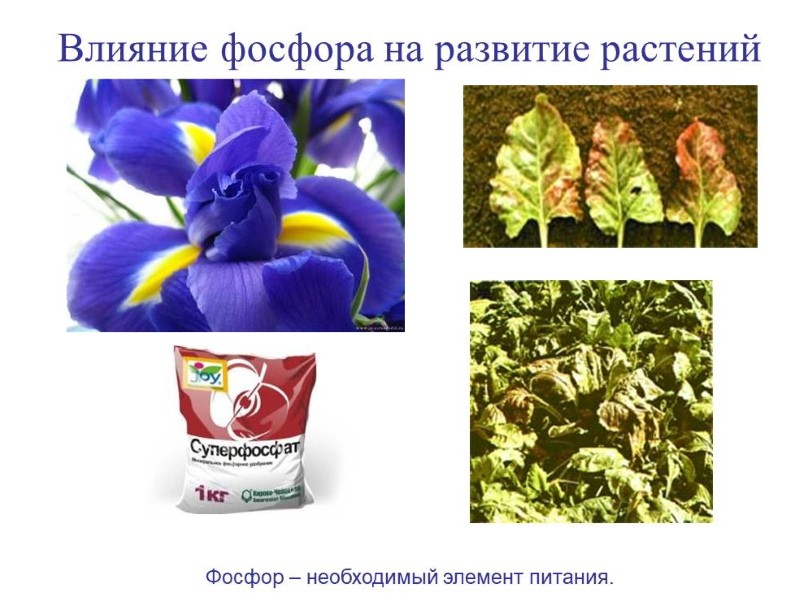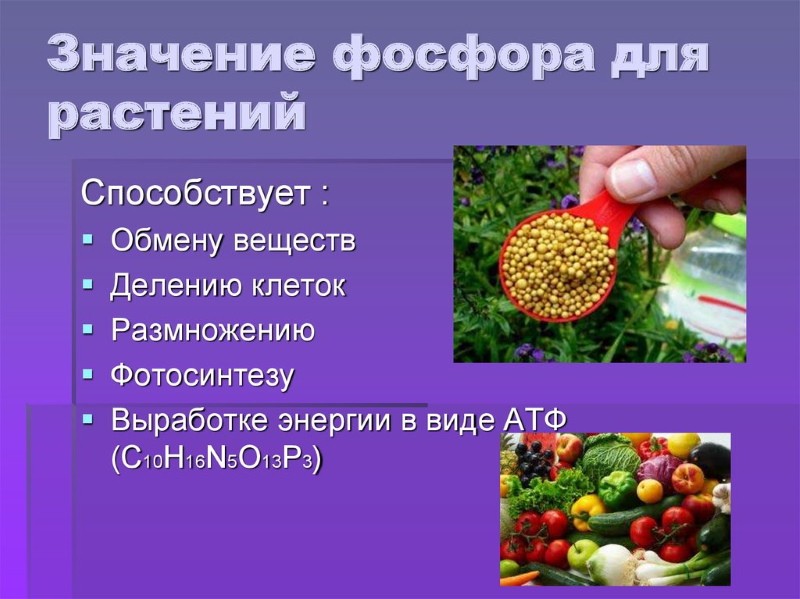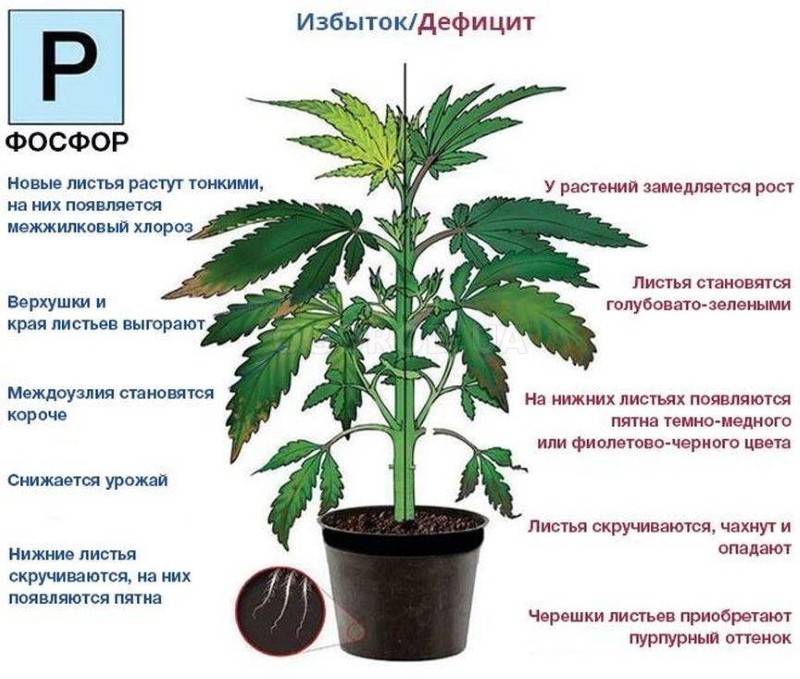To get high yields, it is important to know the role of phosphorus for plants.
 Throughout the growing season, from seed germination to crop maturation, plants need phosphorus - one of the important nutrients. The role of phosphorus for plants is no less significant than their need for potassium and nitrogen, because it is involved in almost all metabolic processes. Carbon dioxide absorbed by plants as a result of photosynthesis is converted precisely with the help of phosphates into carbonic acid anions. And she, in turn, is needed for the formation of all organic compounds.
Throughout the growing season, from seed germination to crop maturation, plants need phosphorus - one of the important nutrients. The role of phosphorus for plants is no less significant than their need for potassium and nitrogen, because it is involved in almost all metabolic processes. Carbon dioxide absorbed by plants as a result of photosynthesis is converted precisely with the help of phosphates into carbonic acid anions. And she, in turn, is needed for the formation of all organic compounds.
The role of phosphorus in plants

Thus, thanks to phosphorus:
- plants develop faster;
- consume moisture more economically;
- their drought resistance and winter hardiness increases;
- improves carbohydrate metabolism, which, in turn, increases the sugar content of the fruit;
- cultures are less likely to get sick;
- more ovary is formed, which leads to an increase in yield.
Signs of phosphorus deficiency in plants
 With a lack of phosphorus, protein synthesis slows down and the amount of nitrates increases. It is possible to determine that crops lack the mineral by their appearance:
With a lack of phosphorus, protein synthesis slows down and the amount of nitrates increases. It is possible to determine that crops lack the mineral by their appearance:
- growth slows down;
- young leaves are formed small;
- the lower foliage darkens, a red tint appears on it, and the edges are bent upward;
- flowering is delayed and fewer buds are tied;
- fruits ripen slowly.
However, excess phosphorus will not be beneficial either. It leads to lower yields as a result of premature development and early fruiting.
What fertilizers contain phosphorus
 In the topsoil, phosphorus is contained in poorly soluble compounds with low mobility. Therefore, plants almost cannot assimilate them, and the soil solution remains the main source of nutrition. In addition, every year, part of this element is removed from the soil along with the harvest. And there are no natural sources of replenishment of important reserves.
In the topsoil, phosphorus is contained in poorly soluble compounds with low mobility. Therefore, plants almost cannot assimilate them, and the soil solution remains the main source of nutrition. In addition, every year, part of this element is removed from the soil along with the harvest. And there are no natural sources of replenishment of important reserves.
Therefore, it is so important to timely and regularly apply phosphorus fertilizers. These include:
- Superphosphate. An easily soluble fertilizer with a phosphorus content of up to 20% (double superphosphate - 45%). It is introduced in the fall for digging, suitable for all types of crops, works best on neutral soils.
- Ammophos... The composition includes 12% nitrogen and 52% phosphoric anhydride, which is highly soluble in water. Suitable for all types of soil. Used at all stages of plant development
- Precipitate. The phosphorus content in hardly soluble fertilizer is up to 38%, applied in autumn for plowing.
- Phosphate rock.Contains 30% phosphorus, it is used as the main fertilizer for acidic soils by autumn application with further embedding in the ground. It is also used for seasonal foliar dressing by spraying aboveground parts of plants.